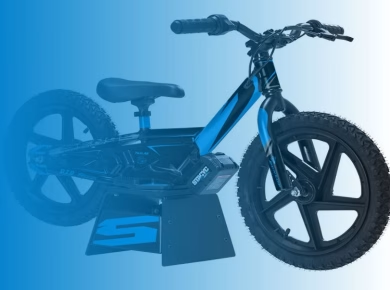The presence of a buffalo hump, which refers to the accumulation of fat at the nape of the neck, can be both a cosmetic concern and a signal of underlying health issues. For many, this condition can affect self-esteem and lead to a quest for solutions. When considering buffalo hump removal, individuals often weigh the cost and effectiveness of liposuction against non-surgical alternatives. This article delves into the various options available for buffalo hump removal, examining their costs, benefits, and potential drawbacks, helping you make an informed decision that aligns with your needs and budget.
Understanding Buffalo Hump: Causes and Implications
Before diving into the removal options, it’s crucial to understand what causes a buffalo hump. Commonly, this condition can stem from factors such as obesity, prolonged use of corticosteroids, and hormonal imbalances. Additionally, certain medical conditions, like Cushing’s syndrome, can contribute to this fatty deposit. Recognizing the root cause of your buffalo hump will help guide treatment decisions and ensure you select the most appropriate solution.
Liposuction: A Surgical Approach
Liposuction is one of the most recognized methods for removing unwanted fat deposits, including the buffalo hump. This surgical procedure involves the use of a cannula to suction out fat from targeted areas, providing immediate results. Patients often choose liposuction for its effectiveness and relatively quick recovery time.
Cost of Liposuction for Buffalo Hump Removal
The cost of buffalo hump liposuction can vary significantly based on several factors, including geographical location, the surgeon’s experience, and the complexity of the procedure. Generally, you can expect to pay anywhere from $3,000 to $10,000. This price typically includes the surgery, anesthesia, and follow-up appointments. However, it’s essential to note that this is an investment in your body and well-being, and the results can be long-lasting.
Pros and Cons of Liposuction
Liposuction does come with its set of advantages and disadvantages. On the positive side, the procedure can yield immediate, visible results, allowing for a more contoured neck area. Additionally, recovery times can be relatively short, with many patients returning to normal activities within a week or two.
On the downside, as with any surgical procedure, liposuction carries risks such as infection, scarring, and anesthesia complications. Moreover, it does not address underlying health concerns that may contribute to fat accumulation. It’s crucial to have a thorough discussion with your surgeon about these factors before making a decision.
Non-Surgical Alternatives for Buffalo Hump Removal
For those looking to avoid surgery, various non-surgical alternatives can help reduce the appearance of a buffalo hump. While these methods may not offer the same dramatic results as liposuction, they can still be effective in improving your contour over time.
CoolSculpting
CoolSculpting is a non-invasive fat-freezing procedure that targets stubborn fat cells without surgery. This technique works by cooling fat deposits to the point where they crystallize and die off, which the body then gradually eliminates.
Cost of CoolSculpting
The cost of CoolSculpting for buffalo hump treatment usually ranges between $2,000 and $4,000, depending on the number of sessions required and the areas being treated. Many patients find this option appealing due to its minimal downtime and lack of anesthesia.
Pros and Cons of CoolSculpting
The primary advantage of CoolSculpting is its non-invasive nature, which means no surgical risks or extensive recovery time. Patients can often return to their daily activities immediately after treatment. However, results may take several weeks to become noticeable, and multiple sessions may be necessary for optimal results.
Ultrasound and Radiofrequency Treatments
Another non-surgical option includes ultrasound and radiofrequency treatments, which use energy to heat fat cells, leading to their breakdown. These methods can improve skin tightness and contour without the need for invasive procedures.
Cost of Ultrasound and Radiofrequency Treatments
The cost for ultrasound or radiofrequency treatments can vary, typically ranging from $1,500 to $3,000 depending on the number of sessions required. These treatments are often performed in a series for the best results, which can add to the overall cost.
Pros and Cons of Ultrasound and Radiofrequency Treatments
These treatments can be beneficial for patients looking for gradual improvement without surgery. They often come with minimal discomfort and no downtime, allowing for a quick return to daily routines. However, the results are usually subtler compared to surgical options, which may leave some patients desiring more significant changes.
Factors Influencing Your Decision
When considering buffalo hump removal, it’s essential to contemplate various factors that may influence your choice between surgical and non-surgical options. Personal goals, budget, and health conditions all play a role in determining the best course of action.
Your Health and Medical History
Before pursuing any treatment, consult with a healthcare professional to evaluate your health and discuss any underlying conditions contributing to your buffalo hump. Understanding your medical history can help determine whether you are a suitable candidate for surgery or if non-surgical options are more appropriate.
Budget Considerations
Financial constraints can significantly impact your decision-making process. While surgical options tend to have a higher upfront cost, some may find the long-term results justify the expense. Conversely, non-surgical treatments may fit better within a tighter budget, but they often require multiple sessions, leading to higher cumulative costs.
Desired Results and Timeframe
It’s also crucial to consider your expectations and how quickly you want to see results. If you’re looking for immediate changes, liposuction may be the best option. On the other hand, if you’re willing to wait for gradual improvements, non-surgical treatments might suit you better.
Post-Treatment Care and Expectations
Regardless of the method you choose for buffalo hump removal, understanding post-treatment care is vital for achieving the best results. For surgical procedures, following your surgeon’s instructions regarding rest, activity levels, and wound care is essential. Non-surgical treatments may require minimal recovery but still necessitate adherence to specific aftercare guidelines.
Long-Term Maintenance
It’s important to note that maintaining your results—whether from liposuction or non-surgical methods—will require ongoing commitment. A healthy lifestyle, including balanced nutrition and regular exercise, can help prevent the return of fat deposits in the treated area.
Conclusion: Finding Your Best Option
Buffalo hump removal presents a personal journey, one that involves careful consideration of your body, health, and aesthetic goals. Whether you lean towards the immediate results of liposuction or prefer the gradual approach of non-surgical alternatives, understanding the costs and implications of each option is paramount.
Ultimately, the best course of action is to consult with qualified professionals who can provide tailored advice based on your individual needs. Remember, this is not just about aesthetics; it’s about feeling confident in your skin and addressing any underlying health concerns. With the right information and guidance, you can take the necessary steps toward achieving a contour that reflects your best self.




